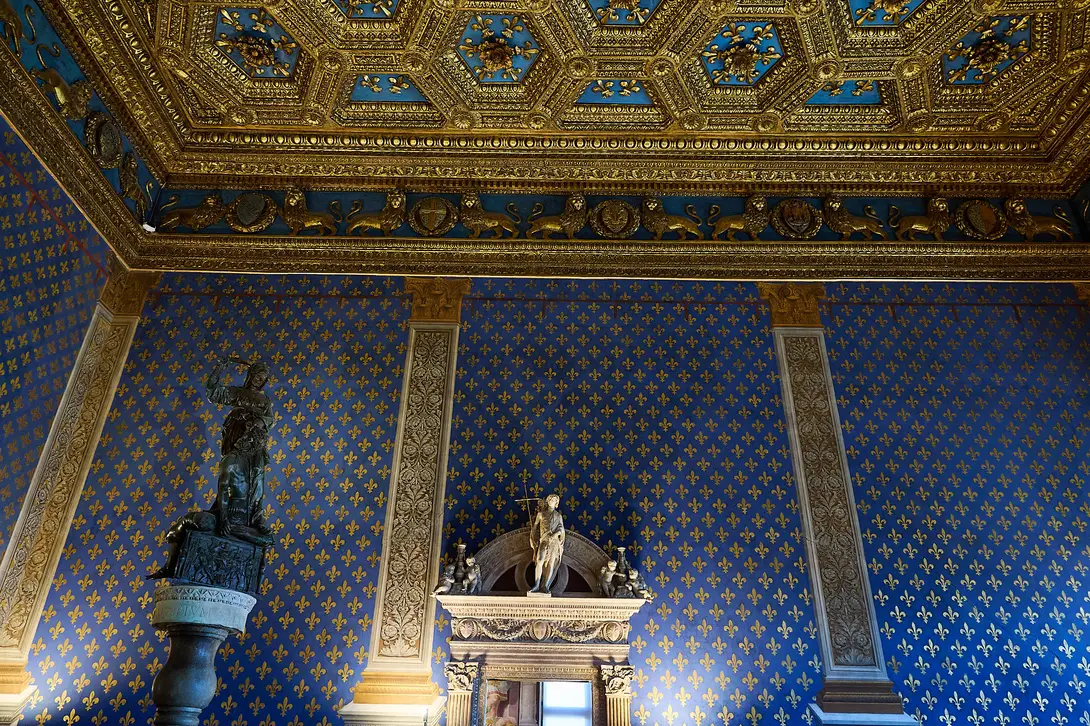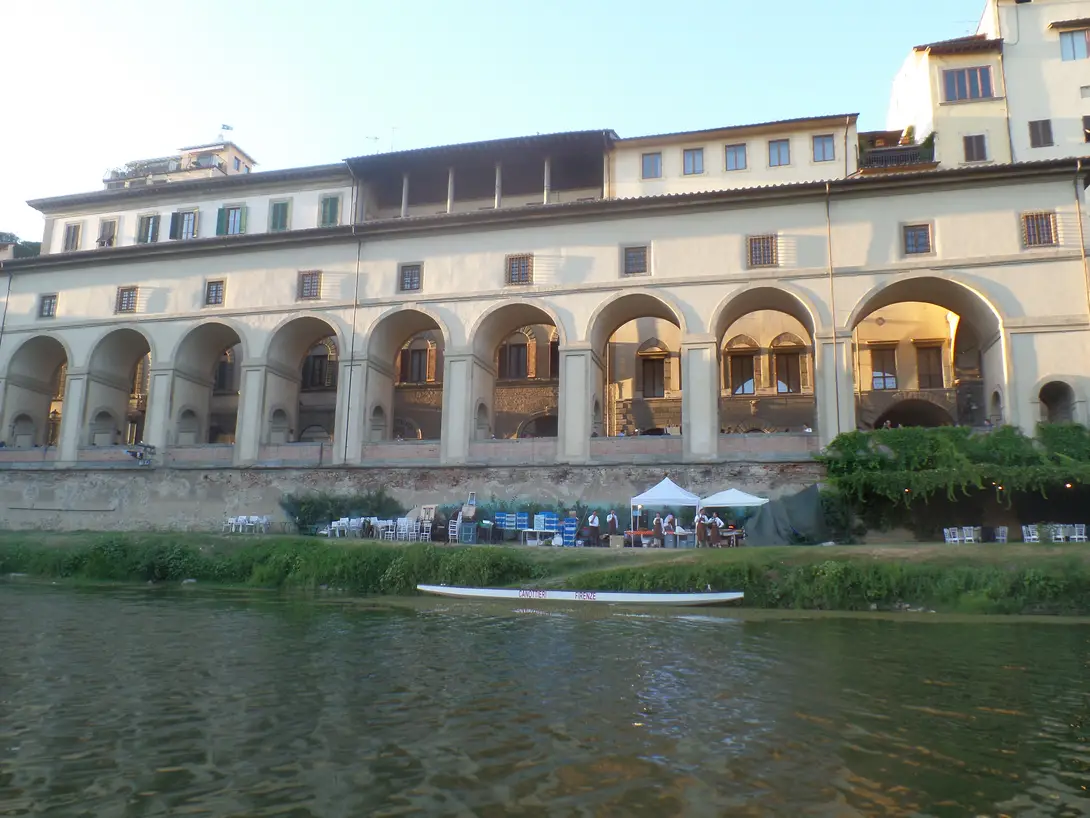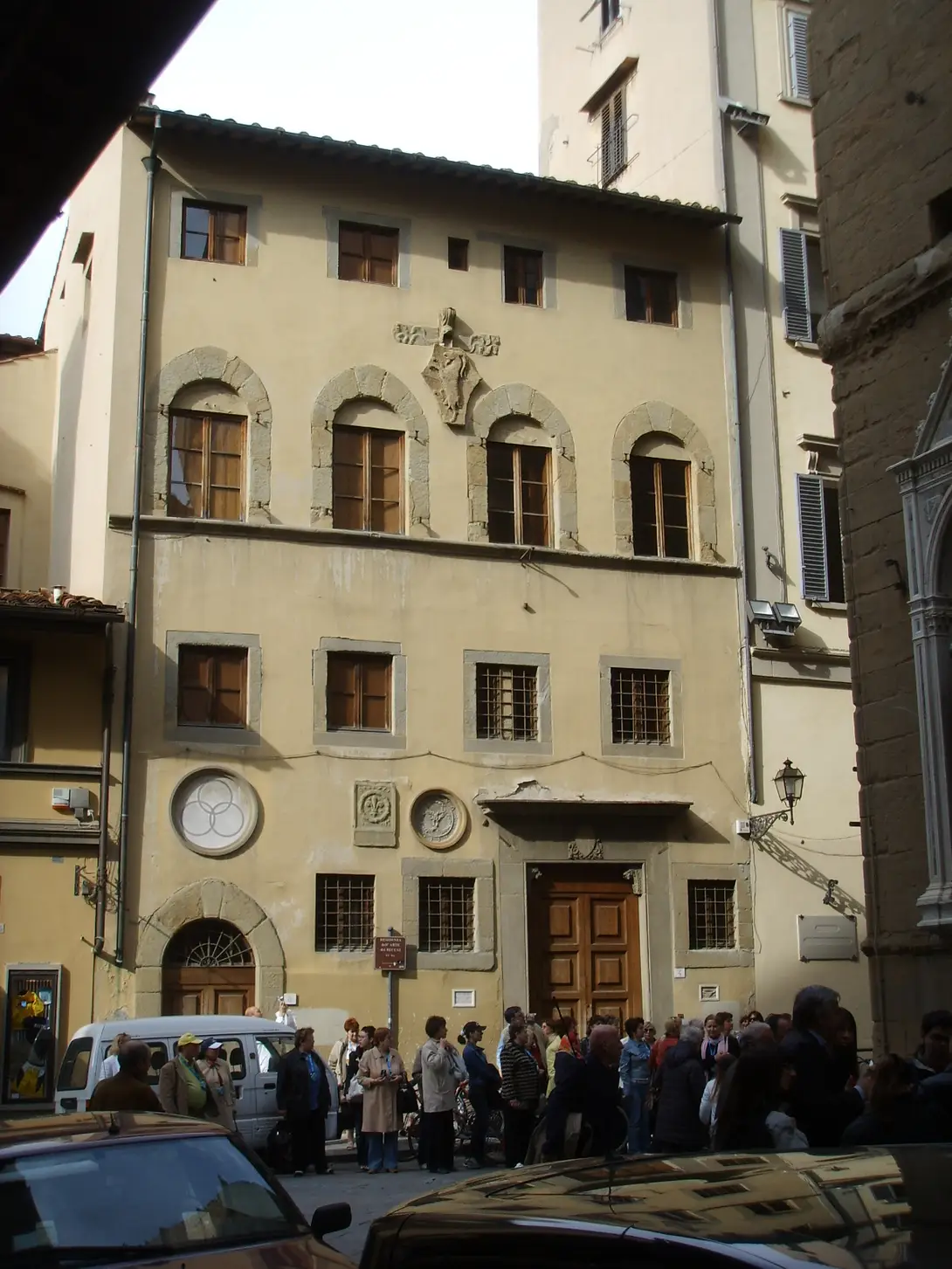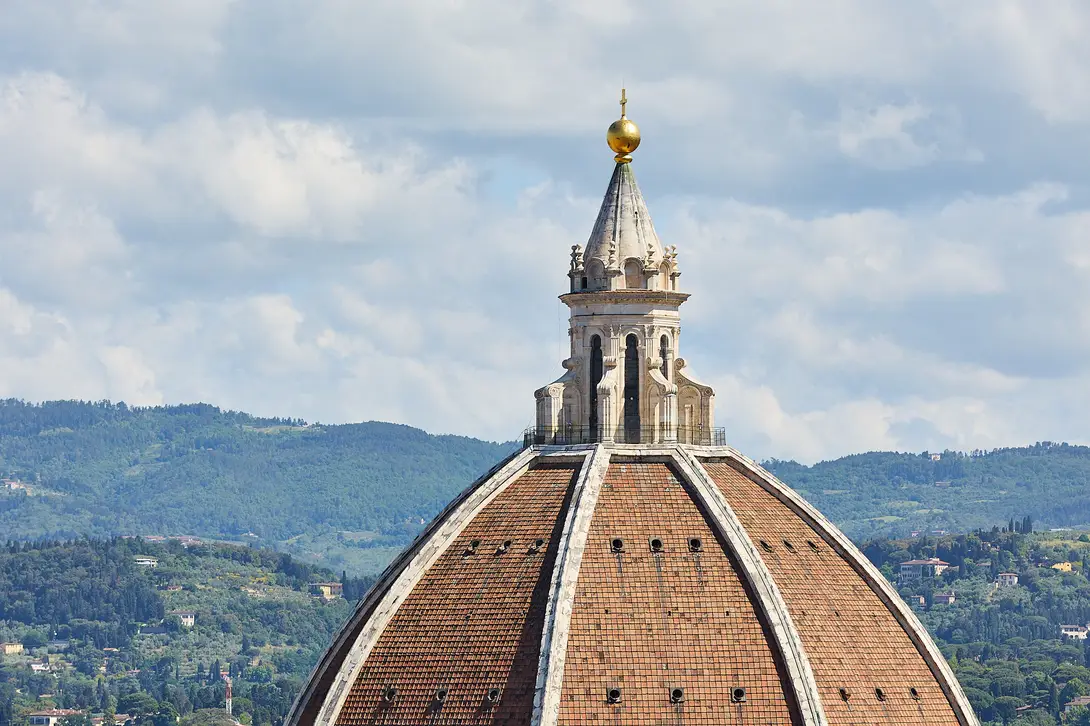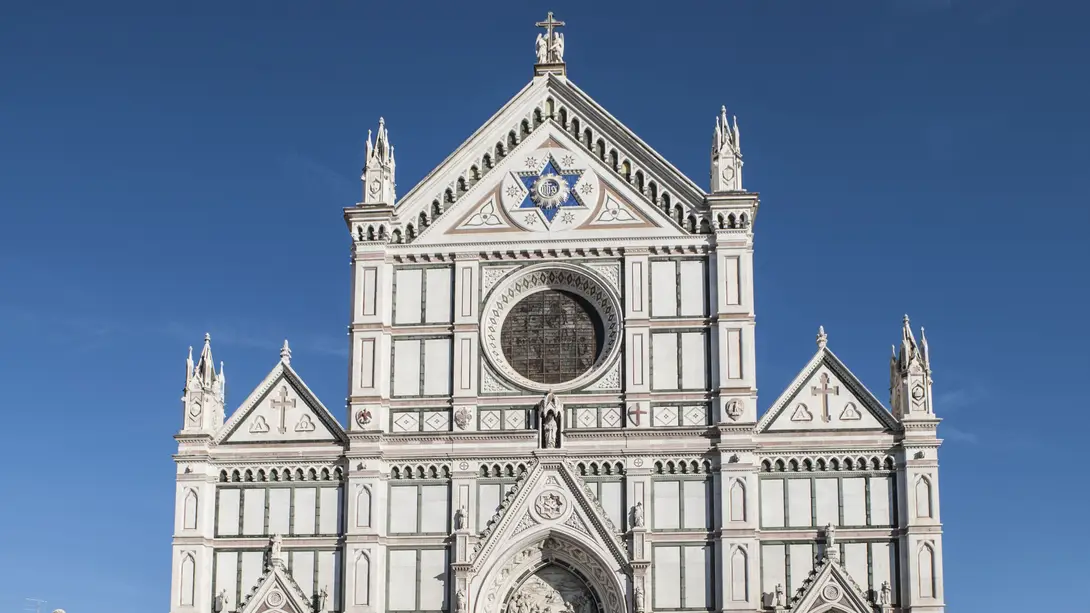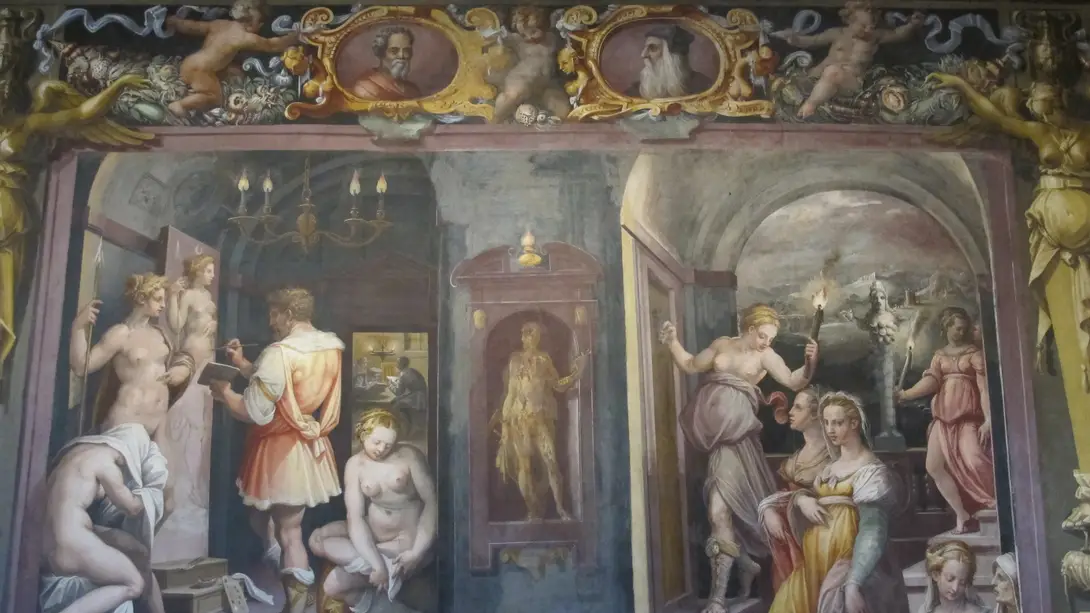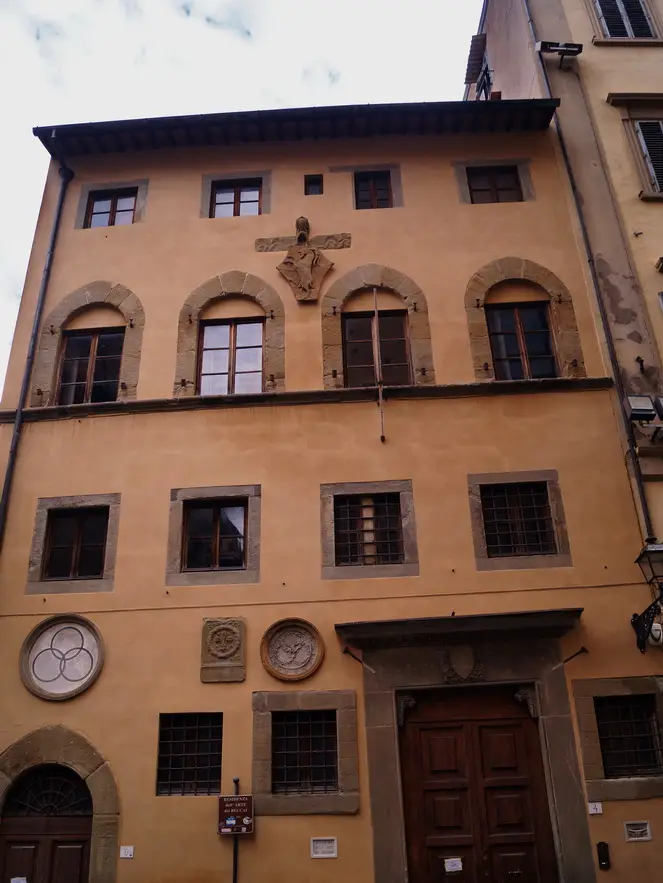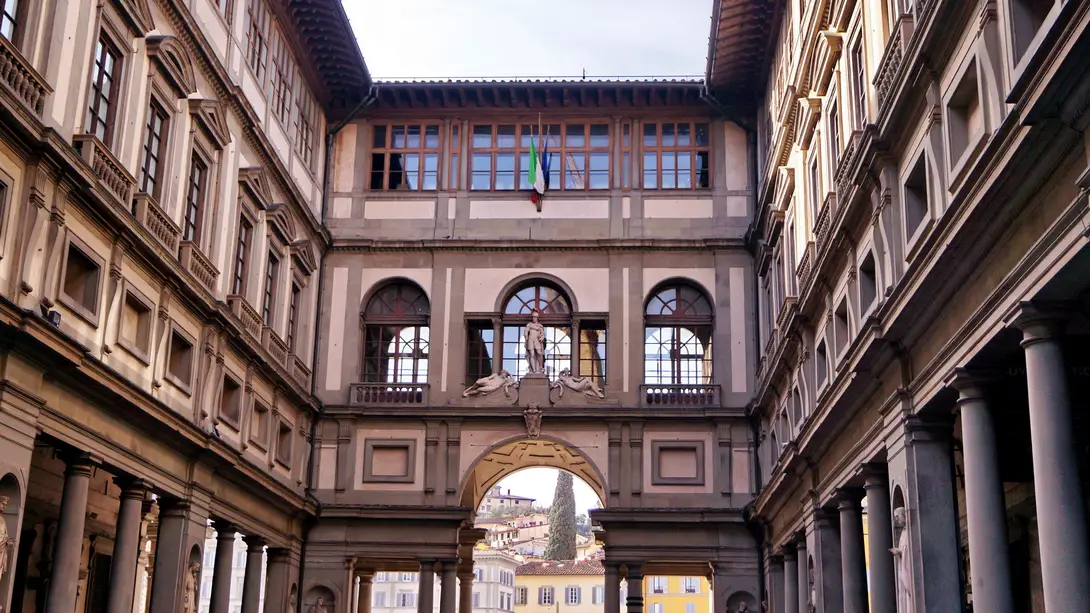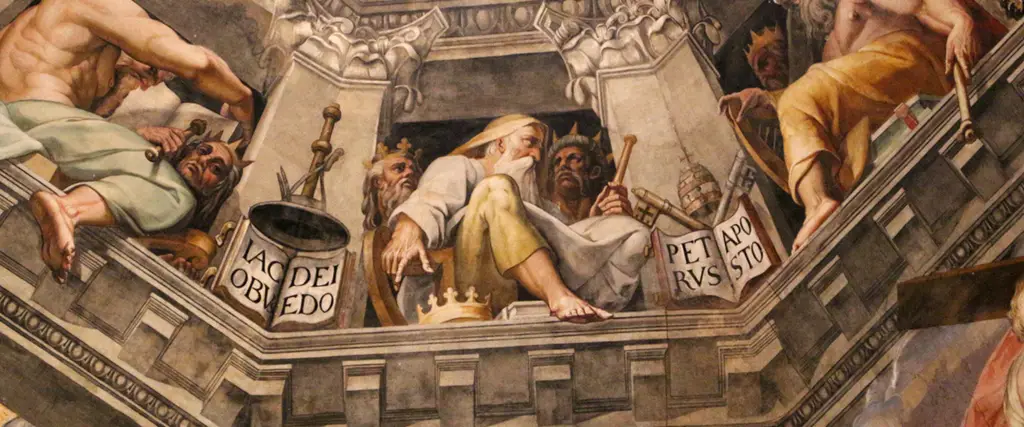
Giorgio Vasari, 450 years after his death
Giorgio Vasari was born in Arezzo in 1511 and died in Florence in 1574, exactly 450 years ago. Between these two dates, the activity of such an important personality for the history of art, the city ofFlorence and Tuscany in general.
Undoubtedly, his greatest work was the compilation of Vite de’ più eccellenti pittori, scultori etarchitettori italiani, essentially the first text on the history of art: in his portraits of the greatest painters andsculptors of the past (from the 13th century) to the 16th century and therefore his contemporaries, he reports episodes in the life, artistic and character traits of his 'colleagues' sometimes in sarcastic tones.
But Vasari, from 1554 in the service of Duca Cosimo I dei Medici, also imprinted important transformations on the city of Florence; a very important union between the two, curiously linked by the same date of death. The Medici commissioned him three major works: the renovation of Palazzo Vecchio (the palace of political power), to adapt it to the residence of his family and the power achieved by the city; the design of a gallery suitable to house the offices, also called 'Magistrature', of the Granducato di Toscana, which today is known as Uffizi Gallery; and then the construction of a corridor that, rising above the streets, would connect Palazzo Vecchio ( the palace of power ) with the new ducal residence, Palazzo Pitti.
With these three works the capability of Vasari was alredy very substantial. Vasari's styles are evident in the Palazzo Vecchio - the inner courtyard, staircase, Salone dei Cinquecento, Studiolo di Francesco I, Sala di Leone X, Sala di Clemente VII, Sala di Cosimo il Vecchio, Sala di Lorenzo il Magnifico and other rooms, all frescoed by the artist. In the Uffizi Gallery, beyond the elegant (and functional) architecture, is the portrait of Lorenzo il Magnifico (1553). The Corridor, to which the architect's name has remained inextricably linked, is a masterpiece of brilliance and it will be soon open to everybody.
Another Vasari's ''imprint'' on the city is the Accademia delle Arti del Disegno, founded on the former Compagnia di San Luca. In 1563, Cosimo I de' Medici approved the statute of the Accademia et Compagnia dell'Arte del Disegno, redesigned by Giorgio Vasari to guarantee the value of artistic activity.
Another colossal work for which Vasari was commissioned in 1568 was the decoration of the interior of Brunelleschi's Dome. Cosimo I commissioned it again, but, like Vasari, he died in 1574. The new Grand Duca Francesco I then entrusted the commission to the painter Federico Zuccari from Marche province. Frescoed with scenes of the Last Judgement, the cupola was completed in just 10 years.
The artist architect was also active in the basilicas of Santa Croce and Santa Maria Novella, where he carried out major interior alterations according to the new spirit of the Controriforma; in Santa Croce he conceived Michelangelo's funeral monument and painted the Last Supper, which was damaged in the 1966 flood in Florence and afterwards brought back to life.
To facilitate his work in Santa Croce Vasari received a place to live from his patron, Cosimo I, in 1561. The Sala Grande of the apartment in Borgo Santa Croce was completely frescoed by Vasari and can be visited, like a museum, after a careful restoration has restored it to its former glory.
Vasari died in this house in 1574.
Comune di Firenze e Museo del Duomo
The places
Stages
Palazzo Vecchio - Monumental Rooms
Palazzo Vecchio is the city's symbolic monument and, for over seven centuries, the seat of its government; it bears extraordinary testimony to all the salient phases of Florence's history and art. It overlooks, with its imposing bulk, Piazza della Signoria.
The Monumental Quarters form the heart of the museum itinerary and include a series of rooms, starting with the grand Salone dei Cinquecento (with a decoration that celebrates Florence, and in particular the Medici dynasty following the advent of Grand Duke Cosimo I), overlooked by the precious Studiolo di Francesco I.
A little further on is the Sala dei Duecento. On the upper floors one can admire: the Sala dei Gigli, the Sala dell'Udienza, as well as the so-called Quartieri Medicei (Eleonora di Toledo's Quarters and the Quartiere degli Elementi). Also of interest is the Sala del mappamondo (or the Sala del Guardaroba), with ancient geographical maps, and the Cancelleria, which was the office of Niccolò Machiavelli during the first Florentine Republic.
The decorations of the various rooms were made between the 15th and 16th centuries by important artists, including Ghirlandaio, Bronzino, Vasari and his assistans.
Along the museum itinerary are some masterpieces of Renaissance sculpture: Michelangelo's Genius of Victory (Salone dei Cinquecento), Donatello's bronze group of Judith and Holofernes in the Sala dei Gigli, Verrocchio's Puttino (the one in Michelozzo's courtyard, the main entrance to the Palazzo, is a copy).
Another museum tour of Palazzo Vecchio include the Arnolfo Tower, with breathtaking views from the top.
All children who come to Florence should be taken to Palazzo Vecchio. The Mus.e Association organises daily activities for families with children of different age groups, from 4 years upwards, by reservation only. For a fun visit on your own, it is possible to rent a Family Kit (recommended for children from 6 years of age) with a map and other useful items for a visit to the Palazzo or the historical centre under the banner of knowledge, wonder and sharing.
The Uffizi Gallery
With its immense artistic legacy, the Uffizi Gallery, now The Uffizi, is one of the most important museums in the world. Following a substantial reorganization in the 17th century, which led to the transfer of some collections (arms, scientific instruments, archaeological finds, ancient and modern bronzes) to other sites and the establishment of new museums, the Uffizi mainly became a picture gallery, with thousands of works ranging from the 13th to the 18th centuries. After the suppression of churches and convents in the 18th and 19th centuries, many works of ecclesiastical provenance swelled the gallery’s collections; other important paintings were acquired at the beginning of the 20th century.
Masterpieces held in the museum include: the large altarpieces of Cimabue and Giotto; 14th-century Sienese art (including a fine Annunciation by Simone Martini); a rich spectrum of 15th-century art from Tuscany and central Italy, with works by Masaccio and Masolino (Madonna and Child with Saint Anne), Filippo Lippi, Botticelli (Birth of Venus and the Primavera), Piero della Francesca (Portraits of Duke Federico da Montefeltro and his Duchess Battista Sforza of Urbino) and Gentile da Fabriano (Adoration of the Magi).
The rooms devoted to 16th-century painting contain works by the masters of the principal Italian schools: from the Adoration of the Magi by Leonardo da Vinci to Michelangelo and Raphael, while Titian, with his Venus of Urbino, Veronese and Tintoretto represent the flowering of painting in the Veneto. Foreign artists are also well represented, with works by Albrecht Dürer, Hans Holbein and El Greco.
The series of 17th-century works opens with Caravaggio’s Bacchus, and features a rich range of work from the major European schools, including Rubens, Van Dyck and the self-portraits by Rembrandt. Finally, Canaletto and Guardi, together with Longhi and Tiepolo, offer a sample of 18th-century art. In addition, the gallery holds ancient sculptures, miniatures and tapestries from the Medici collections. Work is currently underway on the ‘New Uffizi’, which will double the amount of exhibition space, permitting the display of works previously inaccessible to the public.
A map of suggested paths in the gallery - including their duration - is available on the Uffizi Official Website.
The Vasari Corridor
The Vasari Corridor ("Corridoio vasariano") was built by the celebrated architect Giorgio Vasari in just five months during 1565 to enable the Grand Dukes to move freely – and safely – from the seat of government Palazzo Vecchio to their residence in Palazzo Pitti.
On 21 December 2024 the Vasari Corridor of the Uffizi reopens. It has been closed since 2016 to allow for the necessary adaptation to the latest safety regulations.Visitors, starting from a special entrance on the first floor from the Uffizi, will walk over the Ponte Vecchio, so as to reach, across the Arno, the Boboli Gardens and Pitti Palace.
Restored today to its original bareness, it shows itself to the visitor as a simple ‘air tunnel’, more than seven hundred metres long over the heart of the city, exactly as it appeared at the time when the lords of Florence used to walk through it to reach Palazzo Vecchio, undisturbed and safe, from their residence in Pitti Palace, in a very short time.
The Corridor was created to guarantee a safe and fast connection between the two palaces for Grand Duke Cosimo I; to realise it, important interventions were made on the urban structure, for example transferring the meat market that took place on the Ponte Vecchio elsewhere, to avoid unpleasant odours; the goldsmiths' shops, still present today, were moved in its place.
Some houses were expropriated, even an internal passageway was created above the façade of the church of Santa Felicita, so that the grand ducal family could attend services unseen, thanks to a balcony protected by a grille inside the church.
From the windows of the Corridor, which are clearly visible along the route and also above the Ponte Vecchio, one enjoys unprecedented views of the city.
How to visit the Vasari Corridor
The Vasari Corridor can be accessed by purchasing the Uffizi Gallery ticket with an extra charge of €43. Reservation is required €4. With the combo ticket visitors can enter the Uffizi two hours before the scheduled Vasariano tour, to visit the museum.
The Vasariano will be open from Tuesday to Sunday, at the time booked, one group at a time, for a maximum of 25 people (plus two staff members), from room D19 on the first floor of the gallery. Last admittance at 4.35 pm.
The Corridor can only be visited from the Uffizi to Boboli Gardens: visitors will exit through the door next to the Grotta Buontalenti, to be accompanied to the exit from the courtyard of Pitti Palace. It will not be possible to book more than 5 tickets at a time, even for different dates. On the ticket there will be a link to the map with the route to reach the access gate to the Corridor.
Accademia delle Arti del Disegno
The Academy of the Arts of drawing is one of the oldest art institutions in the world. It was founded in 1339 as Compagnia di San Luca, part of the corporation Arte dei Medici e degli Speziali (Guild of physicians and pharmacists). It was officially established in 1563 by Giorgio Vasari and Vincenzo Borghini, under the guidance of Cosimo de Medici, and soon became an excellence in the promotion and training of new artists. Michelangelo Buonarroti was its first academic father, and it was attended by famous artists such as Benvenuto Cellini, Giorgio Vasari, Bartolomeo Ammannati, Giambologna, Jacopo Ligozzi, Tiziano, Tintoretto, Palladio, Artemisia Gentileschi.
In the seventeenth century, the Academy took on the task of training and guidance in the arts, as well as the task of supervising against the export of works of art from the Tuscan Grand Duchy. In 1784, Leopold of Lorraine reformed it and established two institutions: the Academy of Fine Arts, with the task of teaching the most deserving students free of charge, and the College of Professors with functions of promotion, cultural debate and heritage management. In 1936, the Fascist government permanently separated the two institutions.
Today the Academy of the Arts of drawing is a private institution, which organize art courses and temporary exhibitions. It is located in the Palazzo dell'Arte dei Beccai, and well-known personalities of the twentieth century have been part of the Academy: Salvatore Settis, Antonio Paolucci, Rita Levi Montalcini (Nobel Prize in physiology), Philip Johnson, and Renzo Piano.
Brunelleschi's Dome
The dome in Florence Cathedral was begun in 1420 by Filippo Brunelleschi, who conceived an innovative, self-supporting double shell that did away with the need for traditional centring during construction; the vault, completed in 1436, is decorated by a great 16th-century frescoes (the Last Judgement), masterpiece by Giorgio Vasari and Federico Zuccari. The lantern, surmounted by a gilt copper sphere with a cross on top, was realized in 1468, after Brunelleschi's death.
The visitors, after walking between the two concentric shells and see from close up the frescoes, can enjoy the fine view of the city and the surrounding hills from the base of the lantern.
Basilica di Santa Croce
Designed by Arnolfo di Cambio (1296), it is the largest Franciscan church in the world; it is also known as the "Pantheon of Italian glories" for its illustrious tombs (Michelangelo, Galileo, Machiavelli, Rossini, Foscolo, Alfieri) that it preserves in the suggestive Gothic interior.
Among the more than 200 tombs, the two Renaissance monuments stand out, masterpieces of Rossellino and Desiderio da Settignano.
Of the numerous chapels in the transept, frescoed in the fourteenth century, authentic masterpieces are the Bardi and Peruzzi chapels, frescoed by Giotto; remarkable are also the works of Donatello (the Annunciation and the Crucifix). The famous Crucifix of Cimabue damaged by the 1966 flood, instead, is displayed in the sacristy. The museum itinerary includes the Cappella dei Pazzi, by Brunelleschi, the two cloisters and the Last Supper, frescoed by Taddeo Gaddi, a treasure chest of numerous works of art (Donatello, Orcagna, Domenico Veneziano).
Vasari House
Giorgio Vasari, who was born in Arezzo, spent the last years of his lifein Florence in a house near the church of Santa Croce. Of his former home still remains the big hall called Sala Grande, fully frescoed by Vasari himself and his pupils. The frescoesare seen as amasterpiece of the Mannerism.
Today’s restoration allows visitors to rediscover a place of great beauty and extraordinary charm as it was conceived over four centuries ago.
